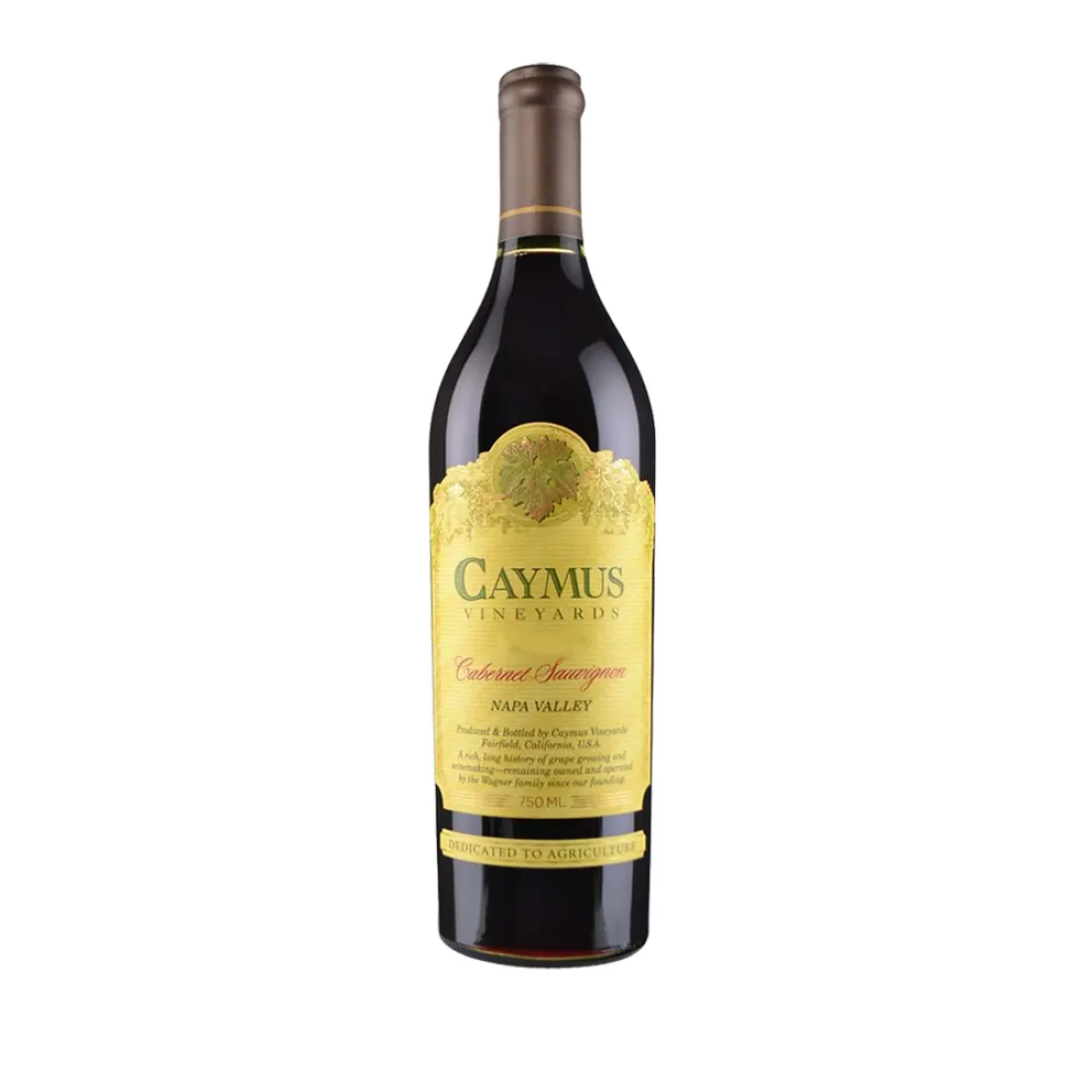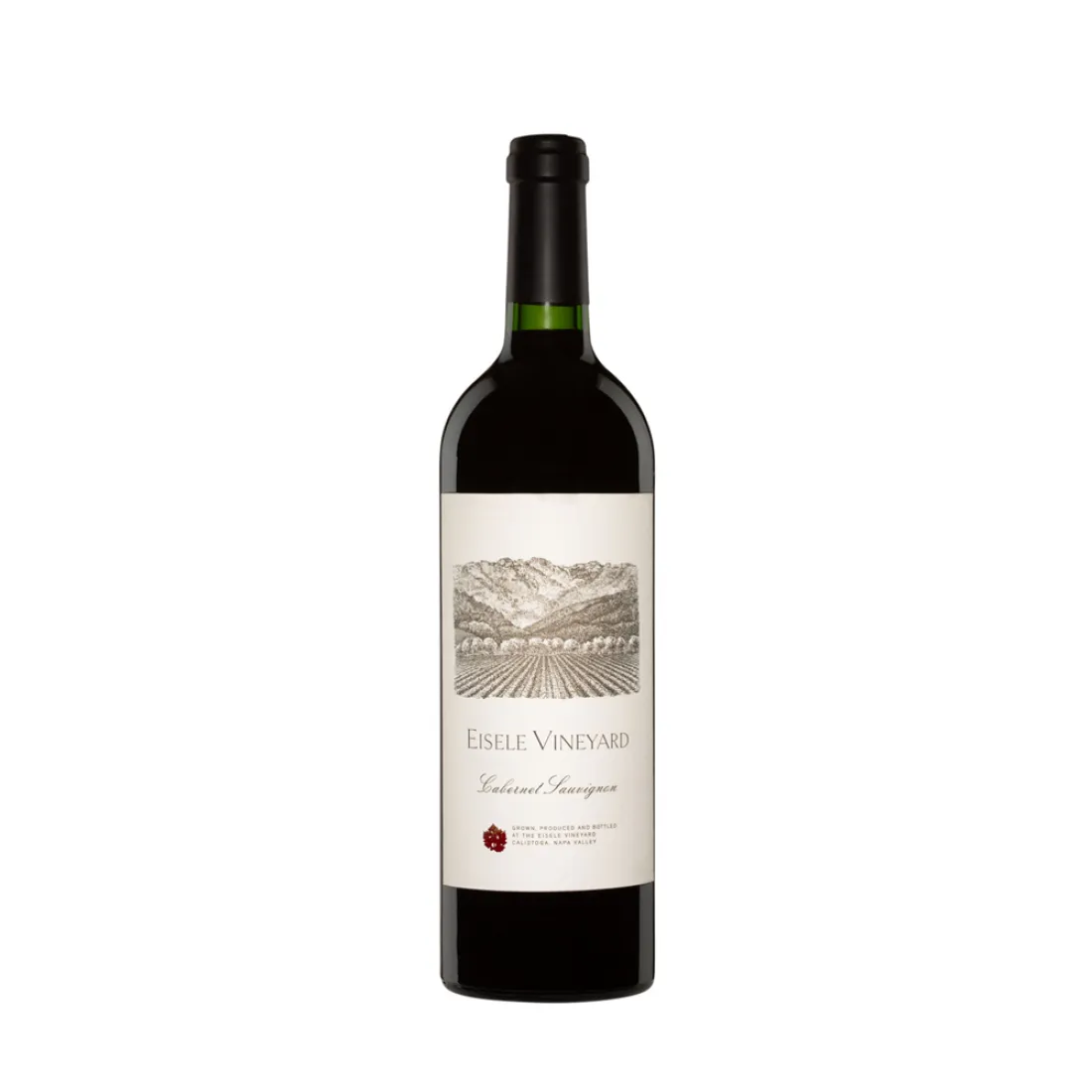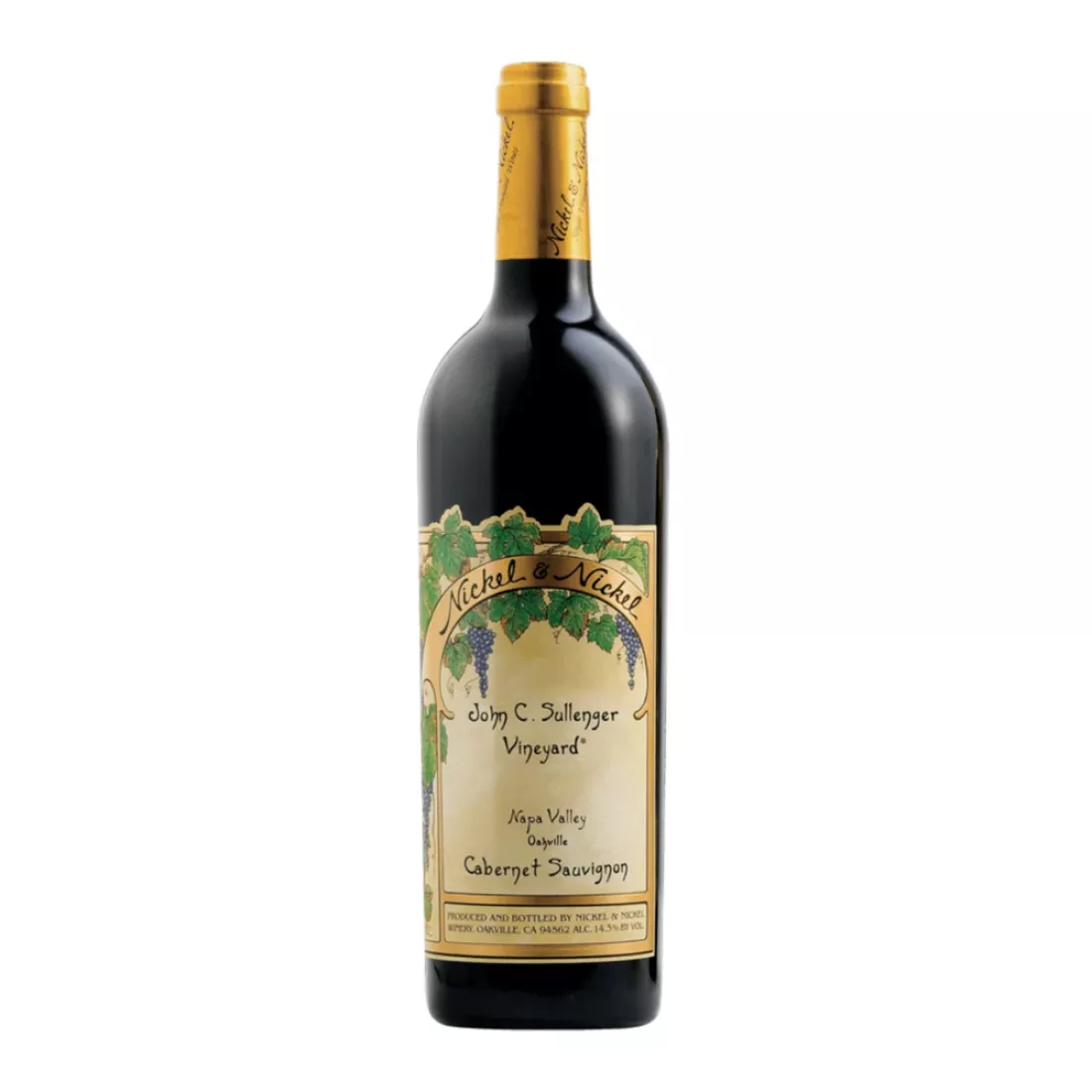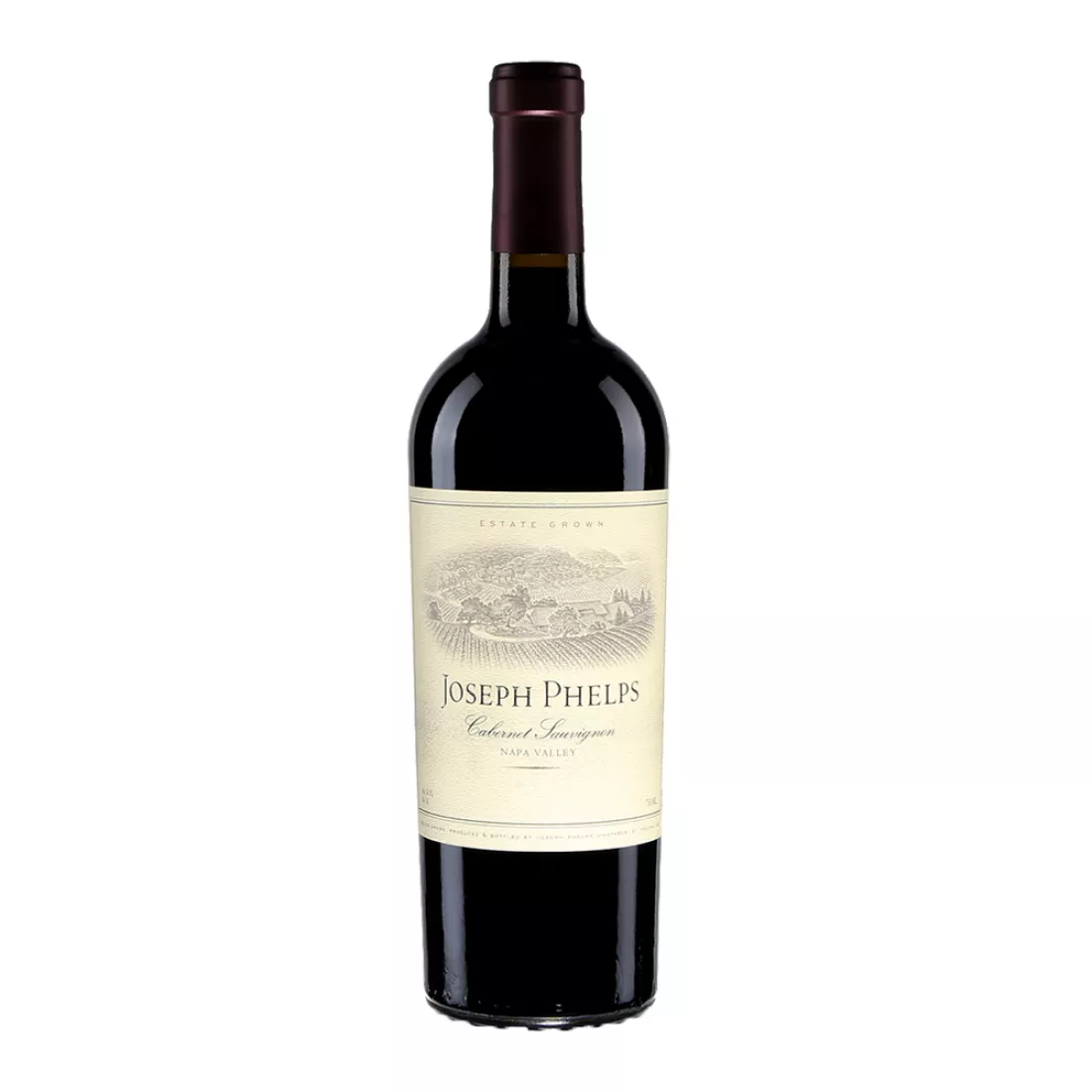
One of America’s premier tourist destinations, Napa Valley is a lush wine region where nature’s beauty transcends time itself. It had a rough start with phylloxera (a grape root eating louse) and prohibition in the early 20th century, but hope blossomed with the wine-loving Italian Mondavi family moving in the 1940s, followed by a widespread bordeaux obsession in the region to draw inspiration for exceptional wines. It wasn’t until the historic "Judgment of Paris” in 1976 that Napa Valley became victorious, dimming down the reputation of Bordeaux and Burgundy wines and gaining international reputation shortly after.
Today, Napa Valley stands peerless, boasting over 45,200 acres of vineyards spread across 16 sub-regions, a testament to its unrivaled legacy and status as the epitome of American winemaking. Within its sprawling landscape lies the heart of its prestige: Cabernet Sauvignon, which accounts for more than half of the vineyards planted here. Commanding a cult-like following, Napa Cabernet Sauvignon wines are coveted treasures, some as rare as gems. To mention, there are over 400 wineries, each offering a unique interpretation of the Napa Cabernet, making the selection of the best Napa Cabernet Sauvignon a herculean task.
In an effort to demystify your quest for the best Napa Cabernet, we’ve penned this blog post, listing the top 20 Napa Cabernet Sauvignon wines and cabernet-based blends. From historic estates to modern pioneers, each bottle offers its own distinctive character. Whether you're a seasoned connoisseur or a novice exploring Napa Valley's vine-covered hills, this read promises a satisfying oenological journey. It’s perfect for discovering the ideal pour for yourself or a loved one, as cabernet makes a good wine gift. As a bonus, we’ve also included expert insights on pairing, serving and storage recommendations.
This Napa Cabernet Sauvignon Blog Covers:
What Makes Napa Valley Ideal For Cabernet Sauvignon?
Napa Valley’s reputation as nature's hotspot for quality cabernet sauvignon wines is primarily attributed to its rich terroir, which optimally supports the growth of cabernet sauvignon vines. By terrier, we mean the unique combination of soil, climate, and geography that shapes the character and quality of wine grapes in a specific region, thereby influencing the overall personality of a wine.
Let's’ explore how Napa’s unique terroir favors cabernet sauvignon:
-
Geography: Nestled south of San Francisco and bordered by the Pacific Ocean and Mayacamas Mountains, Napa Valley boasts diverse topography, including hillsides, mountains, and valleys. This varied landscape offers a range of microclimates ideal for Cabernet Sauvignon cultivation.
-
Climate:Napa Valley benefits from a dry Mediterranean climate, a rarity experienced by only 2% of the population. This region enjoys dry, sunny days and cool evenings during the growing season, thanks to its location near San Pablo Bay, which induces morning cloud cover.
This diurnal temperature variation—warm days and cold nights—extends the hang time of the grapes, promoting slow ripening and enhancing flavor complexity and phenolic ripeness. Consequently, cabernets from Napa exhibit balanced acidity, improved structure, nuanced flavors, and higher quality and aging potential.
-
Soil:Alongside its multifaceted topography and stellar climatic conditions, Napa Valley boasts rich soil diversity, ranging from volcanic to sedimentary and alluvial soils, each imparting unique characteristics to the grapes. However, the most suitable soil for Cabernet Sauvignon is one with good drainage and moderate fertility, such as the gravelly loams prevalent in many parts of the valley. These soils allow the vines to experience slight stress, shifting their focus towards ripening rather than excessive leafy growth.
Moreover, the earthy, dusty taste contributed by the region’s volcanic soils is a rare find in New World wine regions, elevating Napa Cabernets in terms of complexity.
Different elevations and exposures afford winemakers the opportunity to produce grapes with various flavor profiles, which is why there isn't a single best spot in Napa for Cabernet Sauvignon because it's a matter of taste. For instance, hilly and mountainous regions like Stags’ Leap District yield savory, peppery, and smokey Cabernets, while valley floor areas like Oakville produce opulent and fruit-forwarded ones, and bay regions like Carneros offer balanced, age-worthy ones.
So, these are the terroir-driven aspects that make Napa Valley the epitome of Cabernet Sauvignon. Though there’s no doubt that feverishly passionate winemakers honor the region’s legacy by unlocking its exceptional potential with refined winemaking expertise, striking a sweet spot between tradition and innovation. Without this dedication, Napa Cabernets could never achieve and maintain the iconic status they enjoy globally.
What Are The Qualities Of Napa Cabernet Sauvignon Wines?

Though two Napa cabernets cannot be identical due to varying terroir appeals and craftsmanship, all Napa cabernets share several splendid features.
They consistently exhibit flavors of blackcurrant, ripe plum, subtle licorice, black cherry, raspberry, as well as blueberry and/or blackberry—indicating the peak ripeness of grapes when harvested. Furthermore, acidity is vibrant, lending the wine freshness and a lively character, while oak aging dashes the wine with desired flavors like vanilla, cedar, and baking spices. These flavors are as deep as they are diverse, often evolving on the palate for more than a minute.
Lastly, the tannins range from fine-grained to firm, yet they are always well-integrated, providing the wine with stellar balance, a robust mouthfeel, full-bodied structure, and age-worthiness. Top-tier Napa cabernets can be cellared for 15 years or more.
Top Napa Valley Cabernet Sauvignon Wines
Brand: Harlan Estate
Sub-Region: Oakville
Alcohol By Volume (ABV): 14-15%
Cabernet Sauvignon Percentage: High, Often Over 80%
Food Pairing: Grilled Ribeye Steak or Braised Short Ribs
Founded in 1984, Harlan Estate embodies a pioneering spirit, extending its hands in building the well-deserved reputation for Napa Valley worldwide. Known for producing high-quality wines in limited quantities, this cabernet-dominated red blend commands a hefty price tag, making it a literal gem. Impeccably balanced, this wine is incredibly weighty yet light in feel. It boasts a showy nose with intense scents and seamlessly coats the palate with blackberry, cassis, dark chocolate, and subtle hints of cedar and tobacco. The finish flabbergasts, expanding in layers over 60 seconds, along with velvety tannins.
Brand: Screaming Eagle
Sub-Region: Oakville
Alcohol By Volume (ABV): 14-15%
Cabernet Sauvignon Percentage: 80-90%
Food Pairing: Wagyu Beef or Roasted Duck
Crowned with royalty attained in just four decades, this top Napa cabernet from Screaming Eagle is of cult status. It is cutthroat, mirroring the exceptional terroir through a wild obsession with quality, starting from vineyards to aging. Each sip is passionately anticipated, offering fantastic aromas and an opulent mouthfeel, meshed by a velvety texture, intense dark fruit flavors, refined tannins, and a lasting finish. With limited production in a few cases annually, it’s ultra rare and luxurious, highly coveted by wine lovers globally.
Brand: Opus One;
Sub-Region: Oakville
Alcohol By Volume (ABV): 14-15%
Cabernet Sauvignon Percentage: Around 80%
Food Pairing: Herb-Crusted Lamb or Grilled Portobello Mushrooms
Here’s Opus One, famed for the historic collaboration between Robert Mondavi and Baron Philippe De Rothschild, representing a fusion of Old World elegance and New World power. This cabernet sauvignon-dominated red blend is the face of Napa Valley’s bordeaux-style wines and is best defined as bold, complex, and opulent. It is hued as deep ruby and introduces sharp, dark black-fruit aromas, giving way to flavors of black currant, blackberry, and plum, with subtle hints of cedar, tobacco, and graphite on the palate. While the slightly hot alcohol exposes the refined tannins, the lengthy finish retains a touch of warmth.
Brand: Caymus Vineyards
Sub-Region: Rutherford
Alcohol By Volume (ABV): 14-15%
Cabernet Sauvignon Percentage: 100%
Food Pairing: Grilled Meats, Pasta Dishes or Aged Cheeses
One of the benchmark wines of the Napa Valley, this cabernet sauvignon from Caymus has garnered a loyal following over the years with its legendary taste, crafted under the lap of a family-owned ethos and sustainable viticulture practices. On pouring, it shines a deep scarlet and stirs air with an intense bouquet of dark fruits, vanilla, and oak, while pleasing the palate with its starstrucking balance, soft tannins, smooth texture, and rich fruitiness, echoed by a silky finish dotted by subtle sweetness.
Brand: Joseph Phelps
Sub-Region: Stags Leap District
Alcohol By Volume (ABV): 14-15%
Cabernet Sauvignon Percentage: High, Around 90%
Food Pairing: Grilled New York Strip Steak, Braised Beef Short Ribs or Aged Gruyère Cheese
Crafted with meticulous attention to detail, Joseph Phelps Insignia Red Blend is a true expression of the artistry of winemaking. Sourced from the finest vineyards in Napa’s Stags Leap District subregion, this bordeaux blend dominated by cabernet sauvignon showcases perfect harmony with Petit Verdot, Merlot, and Malbec. When opened, it delights the senses with aromas of ripe blackberries, plum, and dark chocolate, complemented by hints of cedar and vanilla. The palate is treated to a symphony of flavors, with layers of black cherry, currant, and espresso, supported by firm yet velvety tannins, leading to a long, graceful finish.
Brand: Darioush
Sub-Region: Produced from multiple sub-regions
Alcohol By Volume (ABV): 14-15%
Cabernet Sauvignon Percentage: Around 85%;
Food Pairing: Grilled Prime Rib, Herb-Crusted Rack of Lamb or Portobello Mushroom Wellington
Crafted with a dedication to excellence that mirrors the grandeur of its namesake estate, Darioush Signature Cabernet Sauvignon hails from the esteemed vineyards and reflects the terroir through its multidimensional profile. Upon pouring, this top Napa cabernet shines like a garnet, enticing the senses with aromas of blackcurrant, blackberry, and hints of cigar box and espresso. A symphony of flavors, including ripe plum, dark chocolate, and subtle spice notes in support of velvety tannins, greets the palate with a long and luxurious finish.
Brand: Silver Oak
Sub-Region: Produced from multiple sub-regions
Alcohol By Volume (ABV): 13.5-14%
Cabernet Sauvignon Percentage: 80-85%
Food Pairing: Grilled Meats, Hearty Stews or Mushroom Risotto
Bold head to toe, this top Napa cabernet shines with a brilliance akin to silver itself and focuses attention with its remarkable oak influence, derived from extended aging in American oak barrels. Across vintages, it is consistently dramatic: a captivating nose with an aromatic blend of ripe fruits, vanilla, and toasty oak, and a palate with supple, polished tannins and notes of dark berry compote, black cherry, vanilla, and baking spices. As it glides down the throat, a smooth finish lingers, leaving behind memories of fruit and oak.
Brand: Cakebread Cellars
Sub-Region: Produced from multiple sub-regions
Alcohol By Volume (ABV): 14-15%
Cabernet Sauvignon Percentage: Around 75-80%
Food Pairing: Grilled Steak, Herb-Roasted Chicken or Hearty Pasta Dishes
Here’s one we can’t overlook. Hailing from Cakebread Cellars, it weaves each moment of sipping and sharing into a fabric of family ethos, typifying quality winemaking driven by sheer passion and best echoing the exceptional terroir. It’s renowned for being an approachable wine with consistent quality. Best defined as robust, its tightly woven tannins envelop moderate acidity and a tangy touch of black fruits—blackberry, black currant, and dark cherry—accented by notes of vanilla and spice from aging in French oak barrels.
Brand: Cardinale
Sub-Region: Produced from multiple sub-regions
Alcohol By Volume (ABV): 14-15%
Cabernet Sauvignon Percentage: Around 80%
Food Pairing: Grilled Ribeye, Braised Beef Short Ribs or Roasted Duck
Like all Cardinale offerings, this wine is a Bordeaux blend at its core, sourced from select vineyards. Dominated by cabernet sauvignon and crafted in limited quantities with a sole focus on quality, it exudes luxury and has earned critical acclaim and admiration from wine enthusiasts worldwide. Superbly structured with abundant minerality, it commands a strong presence on the palate from start to finish. Generous notes of dark chocolate beautifully balance the fruit flavors of dark berry compote, blackberry, and plum, lingering long with hints of mocha and spice.
Brand: Bond
Sub-Region: Oakville
Alcohol By Volume (ABV): 14-15%
Cabernet Sauvignon Percentage: Around 80%
Food Pairing: Grilled Ribeye, Braised Lamb Shanks or Wild Mushroom Risotto
Accredited for crafting high-quality premium single-vineyard wines from iconic vineyards, Bond has truly made its mark on Napa’s global reputation. This cabernet is one of their signatures, sourced from a meticulously tended vineyard rooted in the iron-rich, fractured volcanic rocky knoll in St. Eden, Oakville. Upon uncorking, it shows a great focus as a complex bouquet clouds up, raining the palate with vigorous notes of blackberry, cassis, and dark cherry. Mineral-tinged and broad on the palate, it consistently displays fine-grained, silky tannins and a lush concentration.
Brand: Eisele Vineyard
Sub-Region: Calistoga
Alcohol By Volume (ABV): 14-15%
Cabernet Sauvignon Percentage: Around 80%
Food Pairing: Grilled Ribeye, Braised Lamb or Wild Mushroom Risotto
This good Napa cabernet stands as the pinnacle of modern winemaking for the legendary Eisele Vineyard, quickly captivating from the first glance in the glass. It simply replicates the unique terroir, marked by its gravelly soils, well-drained slopes, and favorable microclimate influenced by the nearby Palisades Mountains. It first grabs the nose with its leafy, floral, tobacco, spice, and fruit-filled character, while on the palate, it reveals layers of blackberry, cassis, and plum, further enriched by subtle hints of violet and graphite, culminating in an elegant finish slippery with velvet tannins.
Brand: Nickel & Nickel
Sub-Region: Oakville
Alcohol By Volume (ABV): 14-15%
Cabernet Sauvignon Percentage: 100%
Food Pairing: Grilled Ribeye Steak, Braised Short Ribs or Aged Cheeses
This cab from Nickel & Nickel pays homage to the family’s esteemed tradition of crafting exceptional single-vineyard wines, showcasing the distinctive attributes of the sub-region, characterized by its gravelly loam soils and favorable microclimate within the John C. Sullenger Vineyard. The wine unfolds with a captivating blend of dark fruits, earthy undertones, and subtle spice, leading to pronounced notes of ripe blackberry, plum, and dark cherry with hints of cocoa and tobacco. The flavors linger alongside firm, structured tannins., culminating in a wine of remarkable depth and complexity.
Brand: Far Niente
Sub-Region: Oakville
Alcohol By Volume (ABV): 14-15%
Cabernet Sauvignon Percentage: Around 80%
Food Pairing: Grilled Ribeye, Braised Beef Short Ribs or Wild Mushroom Risotto
Nestled in the heart of Napa, Far Niente winery exudes serenity, extending the embrace of hospitality with its tranquil ambiance. At its core, it stands as a beacon of excellence, boasting wines crafted with centuries of expertise, seamlessly blending innovation with tradition. This cabernet expression pushes the envelope, showcasing iconic elegance, refinement, and remarkable aging potential. Its taste is truly captivating; each sip is a moment of sheer bliss, defined by fine-grained tannins, a complex bouquet, and rich taste notes of ripe blackberry, cassis, and dark cherry.
Brand: Joseph Phelps
Sub-Region: Produced from multiple sub-regions
Alcohol By Volume (ABV): 14-14.5%
Cabernet Sauvignon Percentage: 75-80%
Food Pairing: Grilled Steak, Roasted Lamb or Aged Cheeses
Famed for crafting wines of unparalleled balance, complexity, and depth, this expression from Joseph Phelps exemplifies the lineage it belongs to. Like most cabs, it is broad-shouldered yet unique, with a starstruck balance of fruit and structure. Pouring into the glass, it gleams like ruby, further fancy with a rich bouquet of dark fruits, vanilla, and subtle earthiness. Its taste is a symphony of intense notes, with blackberry, plum, and dark chocolate whispering along with cedar and spice.
Brand: Stags' Leap;
Sub-Region: Stags Leap District
Alcohol By Volume (ABV): 14-15%
Cabernet Sauvignon Percentage: Around 80%
Food Pairing: Grilled Lamb Chops, Beef Tenderloin or Aged Cheddar Cheese
With its label depicting the historic leap of a stag that gave Stags’ Leap District its name, each wine by Stags’ Leap narrates that bold move, as if escaping the ordinary by best reflecting the distinctive terroir of this sub-region, marked by rocky solis and a unique microclimate. This top Napa cabernet too embodies this spirit, offering a memorable drinking experience. The finish is smooth with structured, velvety tannins, staging a sensory orchestra of dark fruit notes and intense aromas of dark fruits, floral notes, and subtle earthiness.
Brand: Hall Wines
Sub-Region: Produced from multiple sub-regions
Alcohol By Volume (ABV): 14-15%
Cabernet Sauvignon Percentage: Around 80%
Food Pairing: Grilled Steak, Braised Lamb or Aged Cheeses
Hall Wines excels in their unwavering commitment to quality and terrier-driven winemaking, seamlessly blending innovation with time-honored traditions. This cabernet, a symbol of that finesse, is predominantly sourced from the renowned Sacrashe Vineyard, offering richness and elegance with each sip. It is perfumed heavily with violet and lavender and serves a silky-long finish heightened with supple tannins, blackberry, cassis, and dark chocolate, and downcast with espresso and baking spices.
Brand: Hewitt
Sub-Region: Rutherford
Alcohol By Volume (ABV): 14-15%
Cabernet Sauvignon Percentage: 100%
Food Pairing: Grilled Ribeye, Braised Lamb or Aged Cheeses
Estate-grown, this good Napa cabernet impressively captures the essence of the Rurtherford sub-region, famed for its minerality. On the nose, it exudes elegance and finesse while offering a powerful yet subtly juicy aroma. The palate is impeccably balanced, harmonious, and bursting with fruity richness, featuring notes of blackberry, cassis, and dark cherry. The finish is long and complex, revealing hints of almond, oak, caramel, sweet spices, dark chocolate, and Bourbon vanilla. The wine maintains a refreshing complexity throughout, with firm tannins contributing to its good length and persistence.
Brand: La Jota Vineyard Co.
Sub-Region: Howell Mountain
Alcohol By Volume (ABV): 14-15%
Cabernet Sauvignon Percentage: Around 80%
Food Pairing: Grilled Ribeye, Braised Lamb or Wild Game Dishes
Famous for its high-quality, mountain-grown Cabernets, La Jota Vineyard Co. offers a remarkable representation of Howell Mountain’s rugged terroir. This cabernet exudes a reductive and forceful character akin to a mysterious allure, boasting complex aromatics of dark fruit, graphite, and subtle earthiness. Upon unlocking its intense flavors, one experiences a symphony of blackberry, blueberry, and dark cherry, complemented by hints of cedar and cocoa. Its structured finish is characterized by firm, grippy tannins, culminating in a good Napa cabernet to sip on a special day.
Brand: Groth
Sub-Region: Oakville
Alcohol By Volume (ABV): 14-15%
Cabernet Sauvignon Percentage: Around 80%
Food Pairing: Grilled Steak, Roasted Beef or Mushroom Risotto
From earning American wines a well-deserved recognition as the first California wine to receive a perfect 100-point score to being handpicked to grace White House state dinners, Groth cabernet sauvignon stands as a beauty that can’t be put in words. It focuses on balance and elegance, scenting the air with a rich aroma of dark fruit with subtle hints of earth and oak. On the palate, it unfolds with flavors of ripe blackberry, plum, and dark cherry, accented by vanilla and spice, culminating in a smooth, long finish defined by refined tannins.
Why are Napa Cabernets Expensive?
Today, when indulging in a good Napa Cabernet, one can expect to pay an average of $108 per bottle. But what justifies this steep price tag among all the top California red wines? The answer lies in the exceptional rarity and quality that Napa cabernets embody, rendering them a luxurious choice for wine enthusiasts.
Despite California producing 90% of America's wine, a mere 4% originates from the Napa Valley. This limited production yields wines of exceptional quality, boasting remarkable aging potential—a result of the painstaking craftsmanship exhibited across over 400 wineries in the region. From labor-intensive vine management to premium grape selection to meticulous fermentation and aging processes, every step is executed with dedication, resulting in high production costs.
These distinguished and rare cabernets have garnered international recognition, making sure that America maintains a prominent position at the global wine table. Certain esteemed brands, such as Screaming Eagle and Harlan Estate, occasionally even necessitate waiting lists to offer their coveted cabernets. Nevertheless, there are brands like Caymus Vineyards, Silver Oak, and Opus One that offer top Napa cabernets at premium yet somewhat reasonable price ranges.
How To Store Napa Valley Cabernet Sauvignon Wines?
Wines are delicate drinks, so it is critical to store a cabernet sauvignon properly, whether it is a top Napa cabernet or an everyday selection, to maintain its quality and protect it from damage, such as heat, light, or humidity, allowing you to enjoy it to its full potential in the future.
Here’s how to properly store Napa Valley cabernet sauvignon wines:
- Place: To store your chosen Napa cabernet correctly, make sure you place it in a cool, dark place away from direct sunlight and heat sources.
- Position: Store the bottle horizontally to keep the cork moist and prevent it from drying out, which could lead to oxidation and spoilage of the wine.
- Temperature: The ideal storage temperature for cabernet sauvignon wines is around 55°F (13°C) and should remain consistent, as fluctuations can negatively affect the wine’s quality.
- Humidity: A moderate level of humidity (around 70%) is crucial to prevent the cork from drying out and allowing air to seep into the bottle. For long-term storage, it’s best to store the wine in a wine cellar or use a wine fridge with humidity control.
- Stability: Ensure that the storage location is stable, free from any vibrations or disturbances. This helps prevent sediment from stirring up and affecting the wine’s flavor.
How To Serve Napa Valley Cabernet Sauvignon Wines?
One should know how to serve wine in order to add grace and elevate the drinking experience. Here's a quick guide on how to serve Napa Valley Cabernet Sauvignon wines.
-
Temperature: It's advisable to decant Napa cabernets before serving, as they're best enjoyed at around 60–65°F (15–18°C), slightly warmer than cellar temperature but cooler than room temperature.
However, if you have stored your bottle in a warmer environment or it has been exposed to higher temperatures, you may want to chill it slightly in the refrigerator for a few minutes before decanting to bring it down to the ideal serving temperature range. Make sure not to over-chill, as wines can freeze and turn hazardously muted.
-
Decanting: Consider decanting your chosen Napa cabernet for a good length of time before serving it, especially if it’s a younger vintage or particularly bold one. This allows the wine to breathe and fully express its flavors, enhancing the drinking experience. Here’s the guide to decanting various Napa cabernets:
Age Of Wine
Decanting Time
Notes
Young (<5 Years)
30 Minutes - 1 Hour
Helps Soften Tannins and Enhance Aromas and Flavors
Medium (5-10 Years)
1-2 Hours
Allow The Wine To Open Up Fully, Revealing Complex Flavors
Mature (>10 Years)
2-3 Hours
Needed To Soften Tannins and Release Tertiary Aromas. Watch For Sediment.
-
Glassware: Using appropriate glasses is not only for show but also practical in allowing the wine to express itself fully. For Napa Valley cabernet sauvignon wines, glasses with a large bowl and wide opening are recommended to aerate the wine properly and capture its aromas. To avoid overwhelming the palate, serve the standard serving size of around 5–6 ounces (150–180 ml) per glass.
For convenience, consider our Tiffany Wine Glasses Set collection, offering chic wine glasses to pair with any good Napa cabernet of your choice for a sophisticated drinking experience.
-
Pairing: When selecting foods to accompany Napa Valley Cabernet Sauvignon, aim for dishes that flirt with its rich flavors and tannic structure. Typically, this wine pairs excellently with hearty fare such as grilled steak, roast lamb, aged cheeses, or dark chocolate. Its bold profile also stands up to rich sauces and spicy dishes.
For a curated experience, explore our Napa Valley Wine Gifts. These offerings allow you to indulge in thoughtful wine and food pairings gracefully featuring the best Napa cabernet sauvignon wines alongside delectable additions like cheese, chocolates, sausages, crackers, and more.
Remember, after you've poured your Napa Cabernet, if any remains unfinished, reseal it, store the open bottle of wine properly in the fridge, and aim to finish it within 1-3 days as red wines last best when opened.
Frequently Asked Questions about Napa Valley Cabernet Sauvignon Wines
Why is Napa Valley wine so famous?
Napa Valley wines are famous for their top-tier quality and craftsmanship. The region’s diverse microclimates and soil types, coupled with the expertise of its winemakers, result in wines that consistently earn international acclaim.
What wine is most famous in the Napa Valley?
Napa Valley Cabernet Sauvignon stands out as the most renowned wine from the region, celebrated for its bold flavors, structured tannins, and exceptional aging potential.
-
What are some of the most famous Napa Valley Cabernet Sauvignon wineries?
Renowned Napa Valley Cabernet Sauvignon wineries include Opus One, Screaming Eagle, Caymus and Silver Oak, among others. These wineries have earned international acclaim for consistently producing high-quality wines and for their commitment to excellence.
-
How does the price range vary for Napa Valley Cabernet Sauvignon wines?
The price range for Napa Valley Cabernet Sauvignon wines varies depending on factors such as the winery, vintage, and production methods. While there are excellent options available at various price points, iconic and rare wines from prestigious wineries often command higher prices.
-
Is Napa Cabernet Sauvignon sweet or dry?
Bold flavors and strong tannins are characteristics of Napa Valley Cabernet Sauvignon wines, which typically lean towards the dry side.
-
What food pairings work well with Napa Valley Cabernet Sauvignon wines?
Napa Valley Cabernet Sauvignon wines pair beautifully with a range of dishes, including grilled steak, roasted lamb, hearty stews, aged cheeses, and dark chocolate desserts. The wine's bold flavors and robust tannins complement rich, flavorful foods.
-
What is the significance of the vintage variation in Napa Valley Cabernet Sauvignon wines?
The character and quality of Napa Valley Cabernet Sauvignon wines can vary significantly from year to year depending on factors like weather and grape maturity. Some vintages may be exceptional in quality, while others may be more approachable when young.
-
How long can Napa Valley Cabernet Sauvignon wines be aged?
Many Napa Valley Cabernet Sauvignon wines have excellent aging potential and can improve with proper cellaring for 10–20 years or more, depending on the vintage and winemaking style. However, some wines are crafted to be enjoyed in their youth, so it’s essential to check the producer’s recommendations.
-
What are some key factors that influence the quality of Napa Valley Cabernet Sauvignon wines?
Factors such as vineyard location, grape ripeness, fermentation techniques, oak aging regimen, and blending decisions all play a crucial role in determining the quality of Napa Valley Cabernet Sauvignon wines. Attention to detail at every stage of the winemaking process is essential for crafting exceptional wines.
-
Are there any wine tours or tasting experiences available in Napa Valley for Cabernet Sauvignon enthusiasts?
Yes, Napa Valley offers a wide range of wine tours, tastings, and experiences tailored to Cabernet Sauvignon lovers. Visitors can explore iconic wineries, vineyard estates, and tasting rooms throughout the region, where they can sample a diverse selection of Napa Valley’s finest Cabernet wines.
-
Where can I purchase Napa Valley Cabernet Sauvignon wines?
The distribution of Napa Valley Cabernet Sauvignon wines is diverse. One can purchase them directly from wineries, through wine retailers, online wine shops, and at select restaurants and wine bars. To save time and effort, buy Napa Valley wine from our enormous selection, offering each bottle in pristine condition at a competitive price and delivery across the USA.







































Leave a Comment